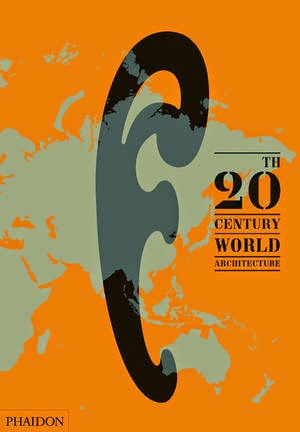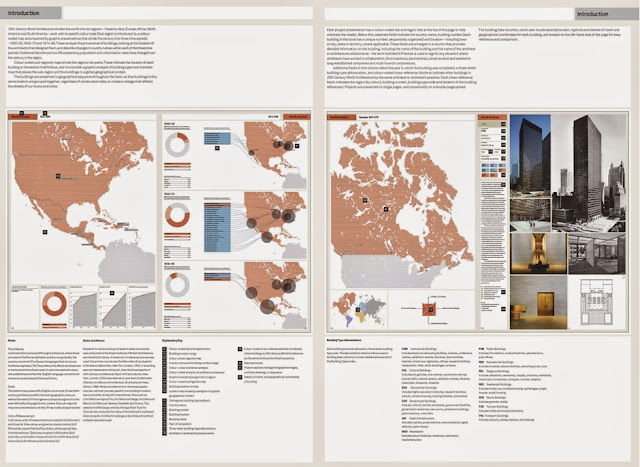Book Review: 20th-Century World Architecture
20th-Century World Architecture: The Phaidon Atlas by the Editors of Phaidon, published by Phaidon, 2012. Hardcover, 824 pages. (Amazon)

In 2004 Phaidon released the aptly named Phaidon Atlas of Contemporary World Architecture, a volume featuring over 1,000 projects on 824 pages, a super-sized snapshot of architecture since 1998. Four years later the publisher released The Phaidon Atlas of 21st Century World Architecture and a thousand more projects on 800 pages. Even with the all-in-one-place international selection of top-notch architecture, the overriding impact is that the books are a cumbersome pair, even provoking Zaha Hadid to exclaim, "Now we need to reinforce the shelving!" Sure, Phaidon came out with pocket-sized travel guides for both titles, but with websites like ArchDaily filling people's inboxes with a dozen projects a day (an Atlas-worth every few months) the important question may not have been, "should the atlases be smaller?" but instead, "should we make the atlases at all?" Given the spread of contemporary architecture online, accessible via laptops, tablets, and smartphones, the heft of the atlases is easy to question. But what has arrived four years after the second title is a look back at 20th-century architecture rather than another collection of contemporary buildings.

The decision to look back at the 20th century with the latest in the Atlas series was a surprise to me when I learned about it, but upon considering what I mention above, it makes sense. People are discovering new buildings every day because they are being documented like never before in history, at least in terms of the number of projects photographed and shared. Yet as we move ahead with a constant stream of new projects, history gets lost behind. With this in mind the virtue of the third installment isn't the sheer number of projects included (more than 750) but the international scope, which equates with lots of new discoveries for everybody but the most seasoned architectural historians. The densest areas of discovery for me are in Africa, the Middle East, and Eastern Europe, though each part of the book includes something new. Of course, novelty is not the point, but the editors should be commended for such a wide-ranging selection of notable buildings.

With 750 buildings spanning ten decades, there are bound to be omissions. A few missing buildings that I realized at first glance were the Academy of Art and Architecture by Wiel Arets (who surprisingly is not included at all in the Atlas), Bernard Khoury's B018 (also an architect without any buildings included), and Mario Botta's Chapel of Santa Maria degli Angeli (he has two buildings in the book). Yes, I'm partial to these three buildings because I featured them in the early days of my weekly web page, but they are indicative of the fact that everybody will have a list of buildings that should have been included but weren't. On the opposite end of the spectrum, if space denotes significance then the most important 20th-century buildings according to the editors at Phaidon (single buildings, not groupings of buildings like Brasilia, Chandigarh, or the Vitra complex) are the ones receiving two-page spreads: the Sydney Opera House by Jørn Utzon, St. Mary's Cathedral by Kenzo Tange, Glasgow School of Art by Charles Rennie Mackintosh, Villa Savoye by Le Corbusier, and Taliesin West by Frank Lloyd Wright.

Given that the book relies heavily upon photographs, illustrations, and page design, it's worth discussing these aspects. People who are familiar with the first two books will notice similarities in regards to the last two, without the maps, layout, colors, and other elements being repeated verbatim. There is a language happening—colored blocks for continents and architect references, maps created by modular shapes, etc.—that creates a consistency across the atlases. The big difference in the 20th-Century World Architecture is the photography, which tends to be contemporary with a building's completion. This means that a good deal of the photos are black-and-white, and that they don't exhibit the reproduction quality of the digital photos that make up the first two books. I find the old photos appealing, and to specially photograph 750 buildings would have probably meant a 2016 release. Whatever the case, the book documents a time of remarkable architectural change when the seeds for the 2,000 buildings in the other Atlases were planted. Then to not have this installment is unimaginable.

In 2004 Phaidon released the aptly named Phaidon Atlas of Contemporary World Architecture, a volume featuring over 1,000 projects on 824 pages, a super-sized snapshot of architecture since 1998. Four years later the publisher released The Phaidon Atlas of 21st Century World Architecture and a thousand more projects on 800 pages. Even with the all-in-one-place international selection of top-notch architecture, the overriding impact is that the books are a cumbersome pair, even provoking Zaha Hadid to exclaim, "Now we need to reinforce the shelving!" Sure, Phaidon came out with pocket-sized travel guides for both titles, but with websites like ArchDaily filling people's inboxes with a dozen projects a day (an Atlas-worth every few months) the important question may not have been, "should the atlases be smaller?" but instead, "should we make the atlases at all?" Given the spread of contemporary architecture online, accessible via laptops, tablets, and smartphones, the heft of the atlases is easy to question. But what has arrived four years after the second title is a look back at 20th-century architecture rather than another collection of contemporary buildings.

The decision to look back at the 20th century with the latest in the Atlas series was a surprise to me when I learned about it, but upon considering what I mention above, it makes sense. People are discovering new buildings every day because they are being documented like never before in history, at least in terms of the number of projects photographed and shared. Yet as we move ahead with a constant stream of new projects, history gets lost behind. With this in mind the virtue of the third installment isn't the sheer number of projects included (more than 750) but the international scope, which equates with lots of new discoveries for everybody but the most seasoned architectural historians. The densest areas of discovery for me are in Africa, the Middle East, and Eastern Europe, though each part of the book includes something new. Of course, novelty is not the point, but the editors should be commended for such a wide-ranging selection of notable buildings.

With 750 buildings spanning ten decades, there are bound to be omissions. A few missing buildings that I realized at first glance were the Academy of Art and Architecture by Wiel Arets (who surprisingly is not included at all in the Atlas), Bernard Khoury's B018 (also an architect without any buildings included), and Mario Botta's Chapel of Santa Maria degli Angeli (he has two buildings in the book). Yes, I'm partial to these three buildings because I featured them in the early days of my weekly web page, but they are indicative of the fact that everybody will have a list of buildings that should have been included but weren't. On the opposite end of the spectrum, if space denotes significance then the most important 20th-century buildings according to the editors at Phaidon (single buildings, not groupings of buildings like Brasilia, Chandigarh, or the Vitra complex) are the ones receiving two-page spreads: the Sydney Opera House by Jørn Utzon, St. Mary's Cathedral by Kenzo Tange, Glasgow School of Art by Charles Rennie Mackintosh, Villa Savoye by Le Corbusier, and Taliesin West by Frank Lloyd Wright.

Given that the book relies heavily upon photographs, illustrations, and page design, it's worth discussing these aspects. People who are familiar with the first two books will notice similarities in regards to the last two, without the maps, layout, colors, and other elements being repeated verbatim. There is a language happening—colored blocks for continents and architect references, maps created by modular shapes, etc.—that creates a consistency across the atlases. The big difference in the 20th-Century World Architecture is the photography, which tends to be contemporary with a building's completion. This means that a good deal of the photos are black-and-white, and that they don't exhibit the reproduction quality of the digital photos that make up the first two books. I find the old photos appealing, and to specially photograph 750 buildings would have probably meant a 2016 release. Whatever the case, the book documents a time of remarkable architectural change when the seeds for the 2,000 buildings in the other Atlases were planted. Then to not have this installment is unimaginable.
Comments
Post a Comment
Comments are moderated for spam.